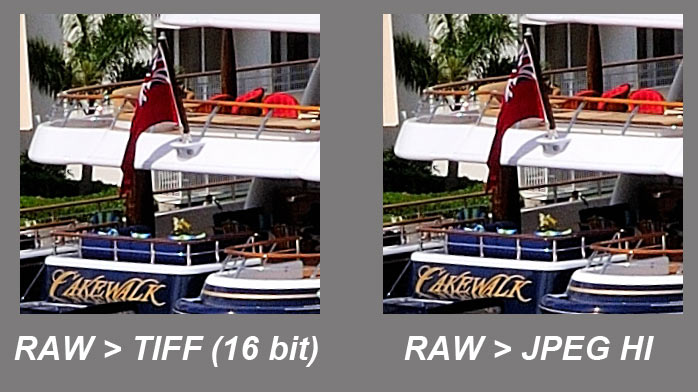Probably no other topic involving photography has had so much misinformation expounded by ‘experts’ than the JPEG vs RAW controversy. The overall theme you will find on the internet if you search ‘JPEG vs RAW’ is that JPEG’s are fine for sharing pictures on the Web, Facebook or email, but are useless for much else. Also is the notion that JPEG’s cannot be manipulated well during post-production. Popular photo magazines often have the optinion that RAW makes better photographs and better photographers. The final ‘proof’ that RAW is superior because the ‘Pro’s’ use it.
Should you shoot RAW or JPEG in your DSLR? The real answer is: It depends.
The fact is most of the anti-jpeg comments are mostly bunk, designed to sell cameras and software and magazines and also to make more people feel like ‘experts’. The true fact is Photography is an Art Form. It does not matter if the photo is taken with a $7500 Nikon D3X or a $400 iPhone… JPEG, RAW, Film, if the end result is Art, then the process is complete. How you get there is a personal choice, take expert opinion (including mine) with a grain of salt.
Todays SLR’s take great JPEGs right out of the camera, if you spend some time getting to understand the camera JPEG controls. In the case of Nikon’s, they are called Picture Controls. Picture Controls can be set to mimic various types of film, saved and easily retrieved for later. We will save the Picture Control discussion for a later date.
When the Raw vs JPEG discussion comes up, I always ask the question: ‘What is your final output of your images?’ Very few of us have the resources to make use of the benefits of shooting RAW in the real world. A high quality JPEG is just as good as a RAW image converted to a high quality JPEG. What format will most photo print houses use? High quality JPEG.
Let’s look at an example to see how well JPEG’s hold up under magnification. This picture of the MY Cakewalk taken with the Nikon D90 with the 35mm 1.8G 1/640 @ f10 ISO 200.
Above is the original image, shot RAW and converted to JPEG and reduced in size for this display.
Above is a comparison of two 300 X 300 pixel crops of the original RAW file, the left image is taken from the RAW converted (in ViewNX) to 16 bit TIFF, which is again converted to 8 bit in Photoshop. The right image crop is RAW converted (in ViewNX) to JPEG highest setting. The TIFF file of this comparison can be found here (845kb download). These type of comparisons are rare for some reason, and I have yet to see an example where a proponent of RAW usage can demonstrate a superior output in properly exposed images. I have reviewed both full resolution files side by side at 100%, and I cannot establish a difference between 16 bit TIFF (58.2 meg) to 8 bit JPEG (7.77 meg) from the same RAW file.
Assuming that the photograph is taken correctly to begin with, the file type that is saved in does not matter. Most modern digital cameras can produce outstanding JPEG’s right out of the camera, though some cameras like the D90 need a bit of tweaking. For photographers looking to improve their technical skill, I recommend that you shoot JPEG’s until you are satisfied with the images, meaning you have mastered your camera to the point that you know what type of image it will produce.





